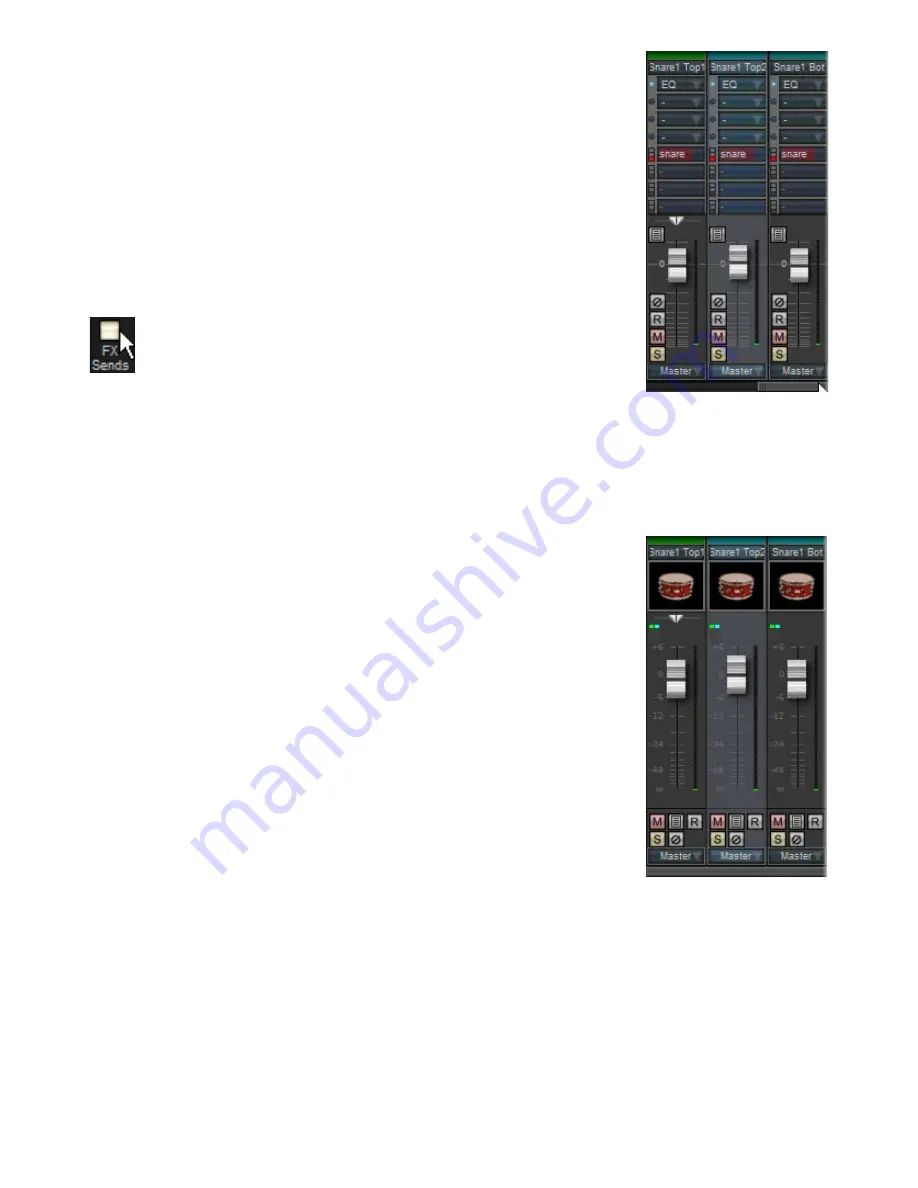
3:3 Introduction to BFD2 mixer channels
Channel views
BFD2 features two distinct channel strip views.
Regular view
This is the default channel strip view in BFD2. If the FX and Send slots are showing, disable the
FX/Sends view button in the toolbar to switch to the Regular view.
Regular view displays a long throw fader and any essential additional controls, such as mute,
solo, Record-enable, phase flip and the channel context menu button.
FX/Sends view
If the Regular view is currently displayed, enable the FX/Sends view button in the toolbar in order
to switch to the FX/Sends view.
This view consists of a smaller fader section and a readout of the 4 effect and send slots.
In addition, aux channels and the master channel have a couple of advanced controls for
setting main input and sidechain trim.
This view is designed to allow you to see the FX and sends of more than one channel
simultaneously. If you do not need to do this you can stick to the Regular view, although if you
need to use the extra aux and master channel input and sidechain trim controls, you must switch
to FX/Sends view.
Types of channel strips in BFD2
Channel strips appear in the mixer dynamically, depending upon what kit-pieces are currently loaded and what mic channels they
contain. There are various types of channel:
Kit-piece Direct channels
Each kit-piece slot that currently has a kit-piece loaded is represented by a number of direct
channel strips on the mixer:
• the primary direct mic(s)
• the bleed mics
Direct channels can be hidden by deactivating the Direct mixer view switch in the toolbar. To
reveal them again, activate the button.
Primary Direct mic channels
Kick and snare kit-pieces are special within BFD.
Whenever a kick is loaded into a slot, it is represented by 2 primary direct channels in the mixer,
for the inside and outside kick mics. These can be identified by the colour of the tabs at the top of
each channel:
• primary direct mics are green
• secondary direct mics are teal
Whenever a BFD2 snare is loaded into a slot, it is represented by 3 primary direct channel strips
in the mixer: there are 2 mics above the BFD2 snares, and another below them.
When a BFD library that does not contain 2 snare top mics is used, only 2 direct channels are
available. If you replace a BFD2 snare with, say, a BFD Jazz & Funk snare, the snare top2 chan-
nel is unused (its coloured tab turns grey) until a 3-channel snare is reloaded into the slot.
Other types of kit-pieces are represented by a single primary direct mic.
Bleed mic channels: the kick1 and snare1 channels
The kick1 and snare1 kit-piece slots have further unique properties. They carry bleed: the sound of other kit-pieces through the 2
kick mics and the first 2 snare mics. The snare top 2 channel in BFD2 does not contain bleed.
These channels, like ambience channels, appear when any kit-piece is loaded into any available slot.
This occurs even if all bleed is turned off in the kit-piece inspector bleed controls, or if it is routed to primary direct mic channels.
Imported kit-piece channels
If you load a kit-piece created by BFD2’s sample import function, it is represented by a single direct channel in the mixer, either
mono or stereo depending upon the samples in the kit-piece.
Imported kit-pieces have no ambience or bleed channels.
Direct snare channels
in FX/Sends view
Direct snare channels
in Regular view
















































